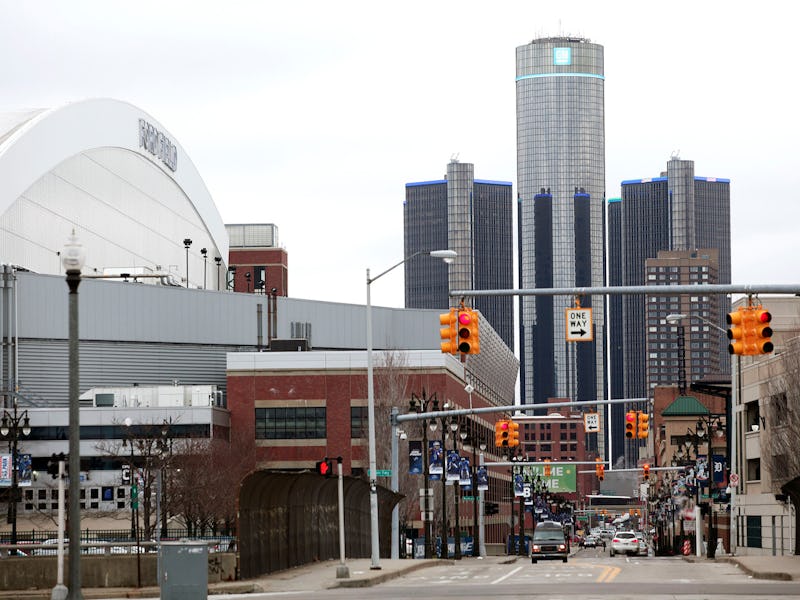If You Want to Understand Ferguson, Understand How America Is Forcing Segregation
Economic policies in place long before the Great Recession have ensured black citizens will be isolated for years to come.

Sadly familiar reports spill out of Ferguson on the one year anniversary of Michael Brown’s death. But it’s naive to be surprised, especially when you consider how racialized poverty and segregation have doubled in America in just this century.
Analyzing economic trends for the newly released Architecture of Segregation, Century Foundation fellow Paul Jargowsky has found that mid-sized cities like Milwaukee, Detroit, and Cleveland have seen explosions in black poverty. In 2000, roughly 7.2 million lived in what we’d classify as high-poverty circumstances in the nation’s ghettos and slums. Today, it’s 13.8 million, and black Americans are disproportionally trapped.
Everyone took a hit during the Great Recession, but in this case we’re talking policies that have been in motion for years, unrelated to the frenzied shuttering of financial firms in the last days of the Bush presidency. Jargowsky targets exclusionary zoning practices, the creation of assisted housing units in a way to reinforce disparity, and gentrification driving up rent in the urban core. The bottom line is that it isolates us from one another with deeper cuts.
Here’s a few words relevant to recent events from Jargowsky:
It is unfortunate that well-meaning people who are reading the news and consuming the coverage of the events in Ferguson, Baltimore, and elsewhere are not getting the full picture. They are seeing places like Ferguson up close, but they are not seeing the larger set of forces that created Ferguson. Consider the fact that almost all of the high-poverty neighborhoods in the St. Louis metropolitan area are in the City of St. Louis, East St. Louis, and a handful of inner-ring suburbs such as Ferguson. Meanwhile, there are five hundred more suburbs that are part of the St. Louis metropolitan area that have exactly zero high-poverty neighborhoods. These richer suburbs have used exclusionary zoning to keep out affordable housing, so the poor and low-income people can only live in the central city and dying suburbs that are being abandoned as wealthier people move further and further out to the fringes for larger houses, bigger bathrooms, and walk-in closets. The whole process is legally enforced through zoning, and underwritten by the mortgage interest deduction and all the subsidies that go into building roads, sewers, and schools for the new suburbs.
Given that the housing stock lasts for decades, these policies build a durable architecture of segregation that ensures that racial segregation and the concentration of poverty is entrenched for years to come.The number of people living in high-poverty ghettos, barrios, and slums has nearly doubled since 2000, rising from 7.2 million to 13.8 million.
More researchers are coming to similar conclusions. Common Dreams notes a recent Cornell University study that found the foreclosure crisis disproportionately kicked blacks and Latinos from their homes, reinforcing racial divides when the families finally settled. And one thing about wealth, it isolates. As the membranes between racial and economic calcify, calling for a national conversation about the kind of problems we’re seeing in Ferguson is going to be harder because no one is going to be speaking the same language anymore.